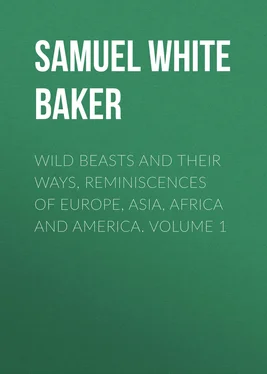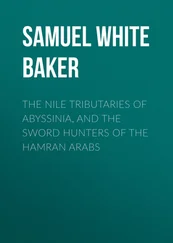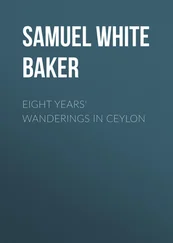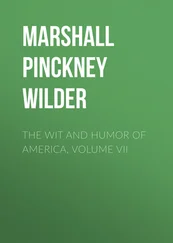Samuel White Baker - Wild Beasts and Their Ways, Reminiscences of Europe, Asia, Africa and America. Volume 1
Здесь есть возможность читать онлайн «Samuel White Baker - Wild Beasts and Their Ways, Reminiscences of Europe, Asia, Africa and America. Volume 1» — ознакомительный отрывок электронной книги совершенно бесплатно, а после прочтения отрывка купить полную версию. В некоторых случаях можно слушать аудио, скачать через торрент в формате fb2 и присутствует краткое содержание. Жанр: Путешествия и география, История, foreign_edu, foreign_antique, foreign_prose, на английском языке. Описание произведения, (предисловие) а так же отзывы посетителей доступны на портале библиотеки ЛибКат.
- Название:Wild Beasts and Their Ways, Reminiscences of Europe, Asia, Africa and America. Volume 1
- Автор:
- Жанр:
- Год:неизвестен
- ISBN:нет данных
- Рейтинг книги:3 / 5. Голосов: 1
-
Избранное:Добавить в избранное
- Отзывы:
-
Ваша оценка:
- 60
- 1
- 2
- 3
- 4
- 5
Wild Beasts and Their Ways, Reminiscences of Europe, Asia, Africa and America. Volume 1: краткое содержание, описание и аннотация
Предлагаем к чтению аннотацию, описание, краткое содержание или предисловие (зависит от того, что написал сам автор книги «Wild Beasts and Their Ways, Reminiscences of Europe, Asia, Africa and America. Volume 1»). Если вы не нашли необходимую информацию о книге — напишите в комментариях, мы постараемся отыскать её.
Wild Beasts and Their Ways, Reminiscences of Europe, Asia, Africa and America. Volume 1 — читать онлайн ознакомительный отрывок
Ниже представлен текст книги, разбитый по страницам. Система сохранения места последней прочитанной страницы, позволяет с удобством читать онлайн бесплатно книгу «Wild Beasts and Their Ways, Reminiscences of Europe, Asia, Africa and America. Volume 1», без необходимости каждый раз заново искать на чём Вы остановились. Поставьте закладку, и сможете в любой момент перейти на страницу, на которой закончили чтение.
Интервал:
Закладка:
The elephant should never exercise its own will, but ought to wait in all cases for the instructions of the mahout, and then obey immediately.
Such an animal, combining the proportions and the qualities I have described, might be worth in India about / 1500 to any Indian Rajah, but there may be some great native sportsmen who would give double that amount for such an example of perfection, which would combine the beauty required for a state elephant, with the high character of a shikar animal.
Native princes and rajahs take a great pride in the trappings of their state elephants, which is exhibited whenever any pageant demands an extraordinary display. I have seen cloths of silk so closely embroidered with heavy gold as to be of enormous value, and so great a weight that two men could barely lift them. Such cloths may have been handed down from several generations, as they are seldom used excepting in the state ceremonies which occur at distant intervals. A high caste male elephant in its gold trappings, with head-piece and forehead lap equally embroidered, and large silver bells suspended from its tusks, is a magnificent object during the display attending a durbar. At such an occasion there may be a hundred elephants all in their finery, each differing from the other both in size and in the colours of their surroundings.
The outfit for an elephant depends upon the work required. The first consideration is the protection of the back. Although the skin appears as though it could resist all friction, it is astonishing how quickly a sore becomes established, and how difficult this is to heal. The mahouts are exceedingly careless, and require much supervision; the only method to ensure attention is to hold them responsible and to deduct so many rupees from their pay should the backs of their animals be unsound.
With proper care an elephant ought never to suffer, as the pad should be made to fit its figure specially. The usual method is to cover the back from the shoulders to the hips with a large quilted pad stuffed with cotton, about 2 1/2 inches thick. In my opinion, wool is preferable to cotton, and, instead of this coverlet being compact, there should be an opening down the centre, to avoid all pressure upon the spine. A quilted pad stuffed with wool, 3 inches thick, with an opening down the middle, would rest comfortably upon the animal's back, and would entirely relieve the highly-arched backbone, which would thus be exposed to a free current of air, and would remain hard instead of becoming sodden through perspiration. Upon this soft layer the large pad is fixed. This is made of the strongest sacking, stuffed as tight as possible with dried reeds of a tough variety that is common in most tanks; this is open in the centre and quite a foot thick at the sides, so that it fills up the hollow, and rests the weight upon the ribs at a safe distance from the spine.
There are various contrivances in the shape of saddles. The ordinary form for travelling is the char-jarma; this is an oblong frame, exceedingly strong, which is lashed upon the pad secured by girths. It is stuffed with cotton, and neatly covered with native cloth. A stuffed back passes down the centre like a sofa, and two people on either side sit dos-a-dos, as though in an Irish car. Iron rails protect the ends, and swing foot-boards support the feet. This is, in my opinion, the most comfortable way of riding, but some care is necessary in proportioning the weights to ensure a tolerable equilibrium, otherwise, should the route be up and down steep nullahs, the char-jarma will shift upon one side, and become most disagreeable to those who find themselves on the lower level. Natives prefer a well-stuffed pad, as they are accustomed to sit with their legs doubled up in a manner that would be highly uncomfortable to Europeans. Such pads are frequently covered with scarlet cloth and gold embroidery, while the elephant is dressed in a silk and gold cloth reaching to its knees. The face and head are painted in various colours and devices, exhibiting great taste and skill on the part of the designer. It is curious to observe the dexterity with which an otherwise ignorant mahout will decorate the head of his animal by drawing most elaborate curves and patterns, that would tax the ability of a professional artist among Europeans.
The howdah is the only accepted arrangement for sporting purposes, and much attention is necessary in its construction, as the greatest strength should be combined with lightness. There ought to be no doors, as they weaken the solidity of the whole. The weight of a good roomy howdah should not exceed two hundredweight, or at the outside 230 pounds. It must be remembered that the howdah is not adapted for travelling, as there is a disagreeable swinging motion inseparable from its position upon the elephant's back which is not felt upon either the pad or the char-jarma. The howdah is simply for shooting, as you can fire in any direction, which is impossible from any other contrivance where the rider sits in a constrained position.
A good howdah should be made of exceedingly strong and tough wood for the framework, dovetailed, and screwed together, the joints being specially secured by long corner straps of the best iron. The frame ought to be panelled with galvanised wire of the strongest description, the mesh being one-half inch. The top rail, of a hard wood, should be strengthened all around the howdah by the addition of a male bamboo 1 1/2 inch in diameter, securely lashed with raw hide, so as to bind the structure firmly together, and to afford a good grip for the hand. As the howdah is divided into two compartments, the front being for the shooter, and the back part for his servant, the division should be arranged to give increased strength to the construction by the firmness of the cross pieces, which ought to bind the sides together in forming the middle seat; the back support of which should be a padded shield of thick leather, about 15 inches in diameter, secured by a broad strap of the same material to buckles upon the sides. This will give a yielding support to the back of the occupant when sitting. The seat should lift up, and be fitted as a locker to contain anything required; and a well-stuffed leather cushion is indispensable. The gun-rack should be carefully arranged to contain two guns upon the left, and one upon the right of the sitter. These must be well and softly padded, to prevent friction. The floor should be covered either with thick cork or cork-matting to prevent the feet from slipping.
It must be remembered that a howdah may be subjected to the most severe strain, especially should a tiger spring upon the head of an elephant, and the animal exert its prodigious strength to throw off its assailant. The irons for fastening the girths should therefore be of the toughest quality, and, instead of actual girths, only thick ropes of cotton ought to be used. A girth secured with a buckle is most dangerous, as, should the buckle give way, an accident of the most alarming kind must assuredly occur. The howdah ought to be lashed upon the elephant by six folds of the strong cotton rope described, tightened most carefully before starting. It should be borne in mind that much personal attention is necessary during this operation, as the natives are most careless. Two or three men ought to sit in the howdah during the process of lacing, so as to press it down tightly upon the pad, otherwise it will become loose during the march, and probably lean over to one side, which is uncomfortable to both man and beast. A large hide of the sambur deer, well cured and greased so as to be soft and pliable, should, invariably protect the belly of the elephant, and the flanks under the fore legs, from the friction of the girthing rope. The breastplate and crupper also require attention. These ought to be of the same quality of cotton rope as used for the girths, but that portion of the crupper which passes beneath the tail should pass through an iron tube bent specially to fit, like the letter V elongated, U. This is a great safeguard against galling, and I believe it was first suggested by Mr. G. P. Sanderson.
Читать дальшеИнтервал:
Закладка:
Похожие книги на «Wild Beasts and Their Ways, Reminiscences of Europe, Asia, Africa and America. Volume 1»
Представляем Вашему вниманию похожие книги на «Wild Beasts and Their Ways, Reminiscences of Europe, Asia, Africa and America. Volume 1» списком для выбора. Мы отобрали схожую по названию и смыслу литературу в надежде предоставить читателям больше вариантов отыскать новые, интересные, ещё непрочитанные произведения.
Обсуждение, отзывы о книге «Wild Beasts and Their Ways, Reminiscences of Europe, Asia, Africa and America. Volume 1» и просто собственные мнения читателей. Оставьте ваши комментарии, напишите, что Вы думаете о произведении, его смысле или главных героях. Укажите что конкретно понравилось, а что нет, и почему Вы так считаете.












